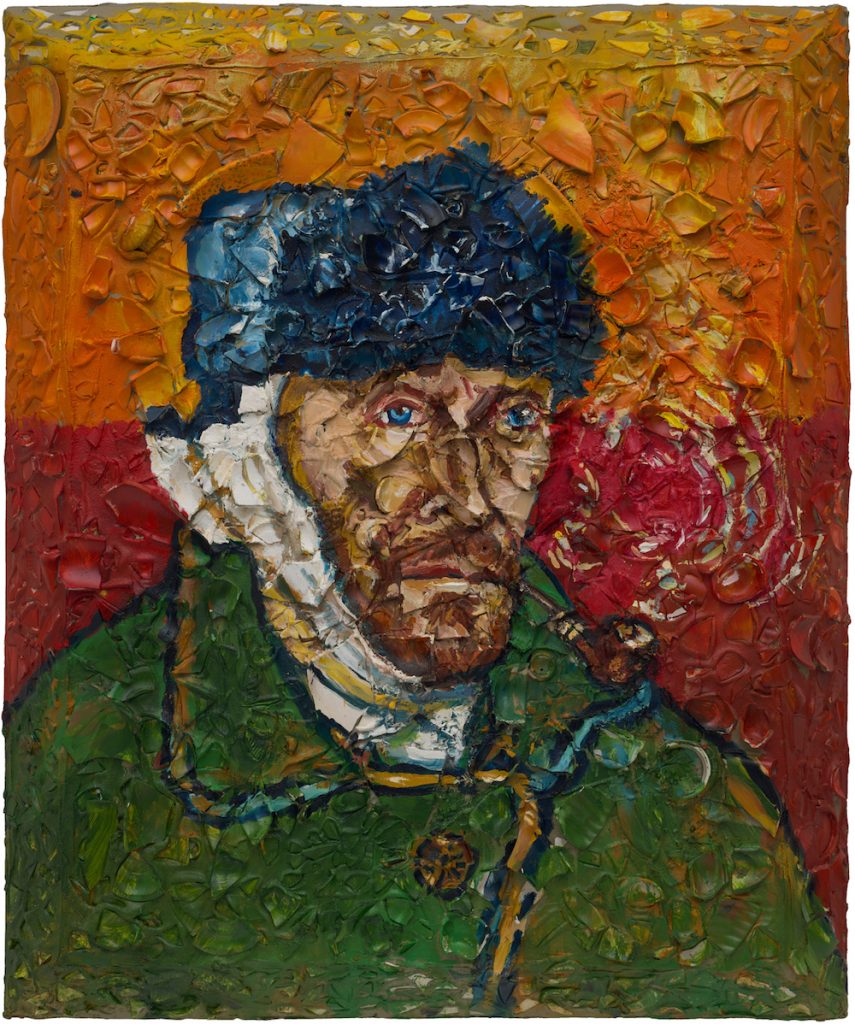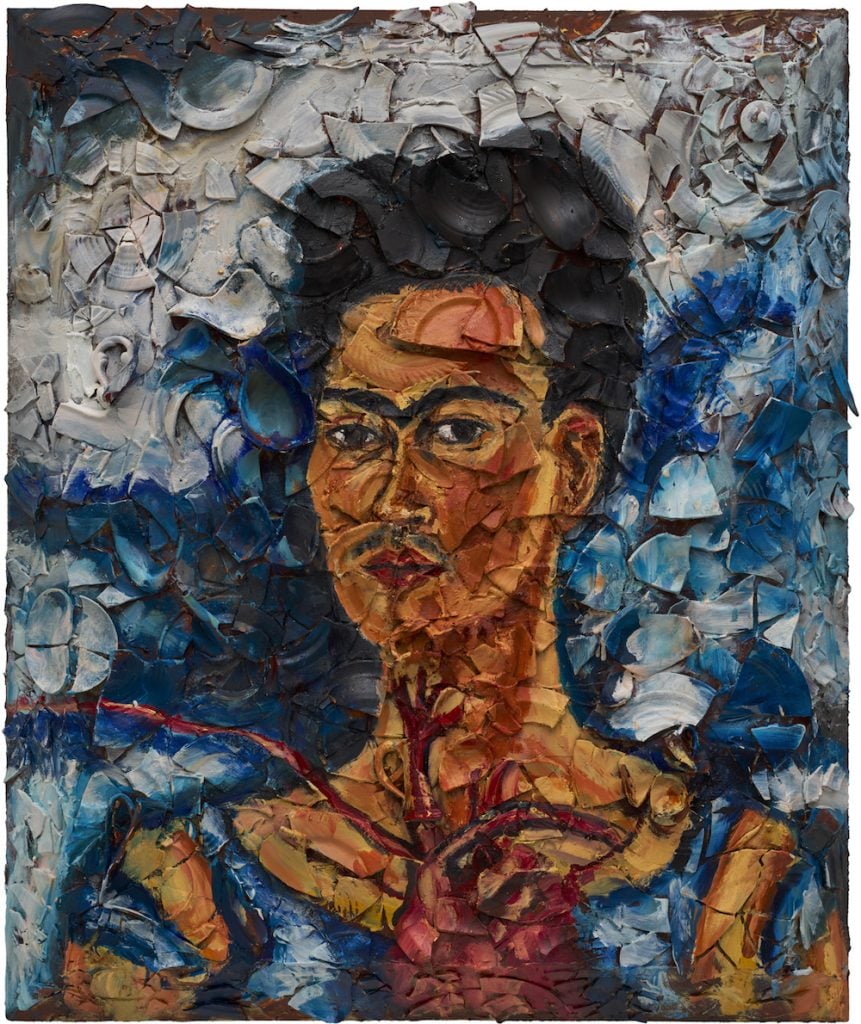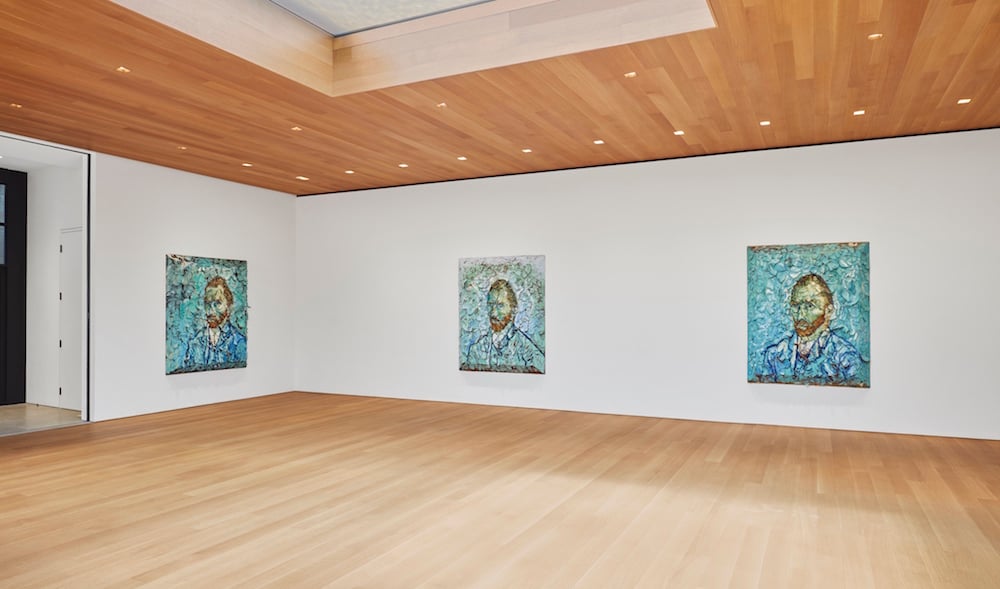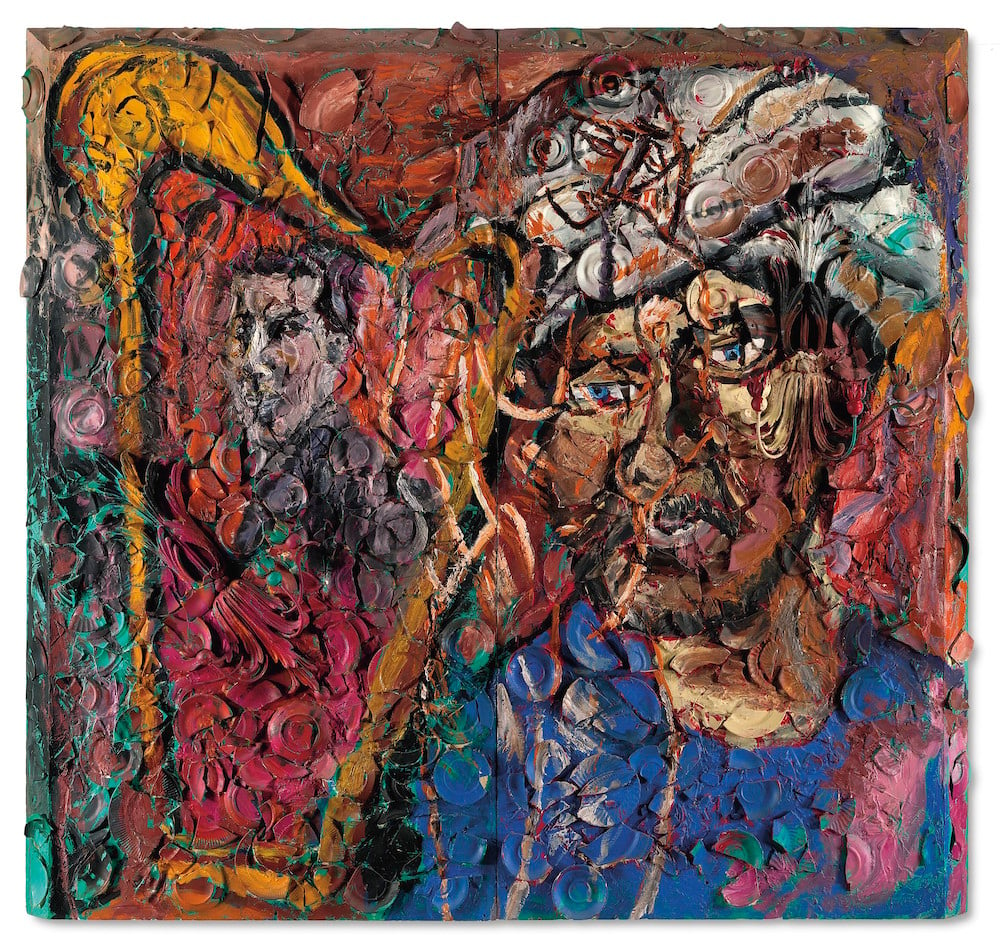Artnet News Pro
Julian Schnabel’s Plate Paintings Captured the ’80s Zeitgeist—and Then Disappeared. Here’s Why Collectors Are Reconsidering Them Now
A new batch are the subject of an exhibition at the Brant Foundation in New York.

A new batch are the subject of an exhibition at the Brant Foundation in New York.

Eileen Kinsella

“It is hard to evoke the mix of generosity, backwardness and relentless, thick-skulled self-aggrandizement that Julian Schnabel and his broken-plate paintings brought to the 1980s art world,” critic Roberta Smith wrote in a New York Times review of a 1999 show revisiting the works that made the artist famous two decades on.
At that point, Schnabel’s plate paintings had come and gone, ushering in a supercharged 1980s New York art market only to crack as the market crashed in the 1990s.
Fast forward to 2021, and the artist’s plate paintings—shards of broken crockery affixed to large canvases ranging from boldly rendered allegorical and abstract works to portraits—are back. And this time, they have some very prominent supporters arguing for their continued relevance (and market value).
As it turns out, Schnabel returned to making plate paintings decades after his explosive debut and well after he had established himself as a filmmaker. These newer works comprise the exhibition “Self-Portraits of Others,” on view at the Brant Foundation in the East Village through December 30. The 25 paintings feature famous artists—Frida Kahlo, Caravaggio, Vincent van Gogh—and actors and loved ones (Willem Dafoe, Oscar Isaac, his son, Cy) outfitted as those same artists.

Julian Schnabel, Number 2 The Two Fridas (2019). ©Julian Schnabel. Image courtesy Pace Gallery.
“Since the late ’70s, Julian’s plate paintings have been an integral part of his oeuvre and it was wonderful to see how this new group of portraits evolved and reflected Julian’s success as a filmmaker and painter,” collector Peter Brant, who established the Manhattan branch of his eponymous foundation inside a former Con Edison power station in 2019, told Artnet News.
The series grew out of Schnabel’s 2018 film about Vincent Van Gogh, At Eternity’s Gate—a film that, as it happens, was inspired by an earlier series of plate paintings Schnabel created in 2014 depicting roses he encountered in Arles near Van Gogh’s grave.
As props for the film, Schnabel painted Willem Dafoe as Van Gogh; he then decided to take it a step further, adapting those works into a series of plate paintings. “That is something Julian does,” says Schnabel’s dealer Marc Glimcher, president of Pace Gallery. “He takes an artist and brings the artist back to life using an actor or using a painting.”
Glimcher and Brant encountered these works last year on the old tennis court at Schnabel’s Montauk house on Eastern Long Island. At the time, Schnabel had a show of another series, tarp paintings, already up at one of Pace’s New York galleries. But Brant was taken enough that he decided to show the plate works at his own space.

Installation view of “Julian Schnabel: Self Portraits of Others” at the Brant Foundation in New York. Photo: Tom Powel Imaging. Image courtesy the Brant Foundation.
The pandemic delayed the show considerably and also scuttled plans for a presentation at another deep-pocketed private art venue, the Hall Foundation in Derneburg, Germany. But it didn’t take long for the word to get out about Schnabel’s latest endeavor.
The majority of the works, priced at $650,000 each, were snapped up ahead of Brant’s presentation, so the show consists mostly of loans from collectors including Brant, Amalia Dayan and Adam Lindemann, the Hall Art Foundation, and private collections in Toronto, Stockholm, and Switzerland. Twelve works are listed as courtesy of Pace (which suggests they are, officially or unofficially, still for sale).
Schnabel created his first plate painting in New York City in 1978. They’re made possible through the use of Bondo®, a material used for body repairs for dents in cars. The series debuted in 1979 at the now-shuttered Mary Boone Gallery; by the early 1980s, they were reportedly selling for between $25,000 and $60,000. In 1983, the auction record for a plate painting, Notre Dame (1979), was $93,500—a formidable sum at the time for a work so fresh from the studio.
Critics were divided. The poet and writer Rene Ricard was taken with the series: “There is no brush or impasto thick enough to get it, so plates it had to be…. lt’s as if these shards flew across the room and stuck there from the force of the blow.”
Smith, in that 1999 New York Times review, was not so convinced: “Mr. Schnabel’s early plate paintings are frequently incoherent, and his development since then has not clarified their promise,” she wrote. “Their influence on other art has been diffuse, more emotional than stylistic. Most of them feel like relics, rather than viable artworks.”

Julian Schnabel, What Once Denoted Chaos is Now a Matter of Record (1981). Image courtesy Christie’s.
Schnabel stopped making the plate paintings by 1988, other than the occasional portrait of friends, according to his son, art dealer Vito Schnabel. By that time, he’d created a total of around 50, a number that may seem low considering just how large they loom in the artist’s mythology.
The paintings fell out of favor when the market crashed in the early 1990s, and as the contemporary art market rebounded in the early 2000s, the average price for a work in the series hovered between $200,000 and $350,000, according to the Artnet Price Database.
After more than two decades of fickle demand, interest began picking up again around 2013. In two successive years of May sales, plate paintings made new records for the artist. Schnabel’s dealer Pace Gallery began to push for a comeback tour after he returned to the gallery in 2016 (he had maintained a more informal relationship with Gagosian since 2002).
Today, Schnabel’s plate paintings are an example of a body of work that looms large in the cultural consciousness and carries the backing of enough influential, deep pocketed collectors to guarantee it won’t be left behind. Of the artist’s top 10 auction prices, eight are for plate paintings—though only one of those has been set in the past year.

Julian Schnabel and Vito Schnabel at the LongHouse Reserve Summer benefit on July 20, 2019 in East Hampton, New York. (Photo by Sonia Moskowitz/Getty Images)
Schnabel’s auction record is held not by a plate painting, but by an oil and cow hide on velvet work, Ethnic Type #14 (1984), which sold for $1.4 million at Christie’s in 2017, doubling its $700,000 high estimate. The second highest auction price, a plate painting from the later “Van Gogh roses in Arles” series, sold for $1.2 million at a Sotheby’s day sale in 2018.
More recently, Taiwanese singer and tastemaker Jay Chou including a rose plate painting created just this year in a sale he curated for Sotheby’s, suggesting the work may be gaining international appeal. Victory After S-chanf VI (2021) sold for $927,000 in Hong Kong in June, shattering its $193,230 high estimate.
Some of the relatively modest auction pricing may also be a reflection of supply. Vito Schnabel estimates that roughly half of the original 1970s and ’80s plate paintings remain with museums, institutions, and foundations that initially acquired them. On the private market, he says, they have been sold for prices well above the auction realm, and as high as $3 million to $6 million.